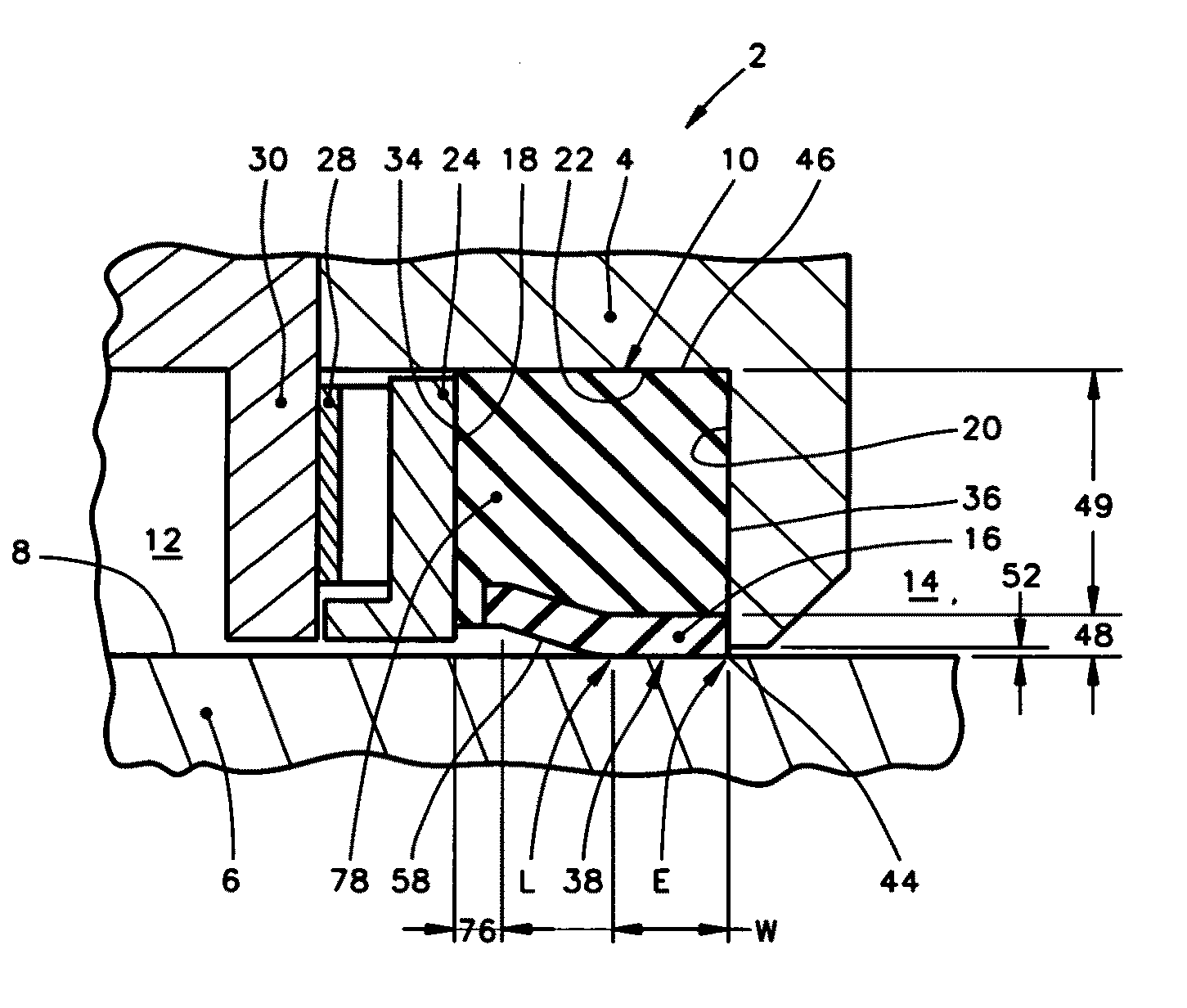Rotary seal with improved film distribution
- Summary
- Abstract
- Description
- Claims
- Application Information
AI Technical Summary
Benefits of technology
Problems solved by technology
Method used
Image
Examples
Embodiment Construction
1. Description of FIG. 1
[0052]FIG. 1 is a graph that schematically represents an interfacial contact pressure plot at any circumferential location of a typical seal, for example, manufactured according to one of assignee's U.S. Pat. Nos. 4,610,319, 5,230,520, 6,315,302, 6,382,634, and so forth. The proportions of a contact pressure plot will vary depending on specific seal geometry and analysis constraints, but the general plot characteristics are captured in FIG. 1. The plot has a first footprint edge L and second footprint edge E, which correspond to the lubricant-side and environment-side edges, respectively, of the dynamic sealing interface / footprint. The direction of relative rotation between the seal and the mating relatively rotatable surface is normal (perpendicular) to the axis labeled “interfacial width”, and normal (perpendicular) to the page on which the figure is printed.
[0053]At any given circumferential location of the footprint, the inlet contact pressure rises from ...
PUM
 Login to View More
Login to View More Abstract
Description
Claims
Application Information
 Login to View More
Login to View More - R&D
- Intellectual Property
- Life Sciences
- Materials
- Tech Scout
- Unparalleled Data Quality
- Higher Quality Content
- 60% Fewer Hallucinations
Browse by: Latest US Patents, China's latest patents, Technical Efficacy Thesaurus, Application Domain, Technology Topic, Popular Technical Reports.
© 2025 PatSnap. All rights reserved.Legal|Privacy policy|Modern Slavery Act Transparency Statement|Sitemap|About US| Contact US: help@patsnap.com



